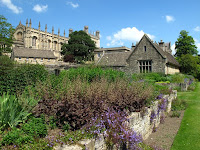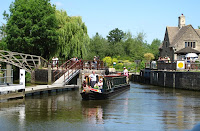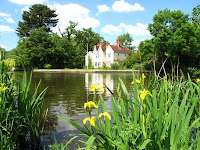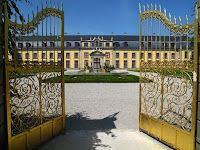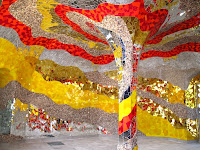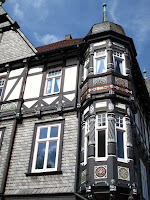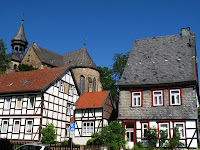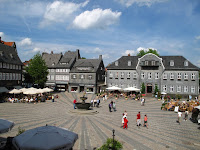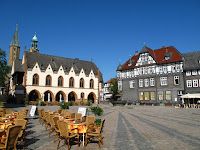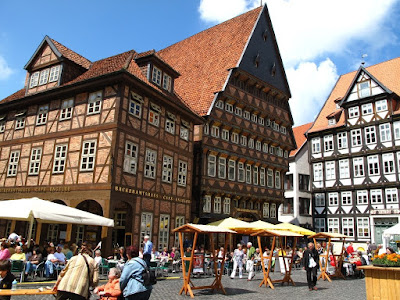
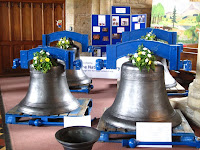
We spent the afternoon in three lovely villages to the north, starting with Olney. This is a sizable market town with many lovely cafes and clothing shops. It was once a lace making town, and we saw one lovely old stone building which was involved in the trade.
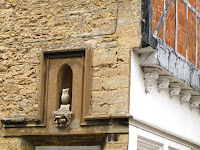
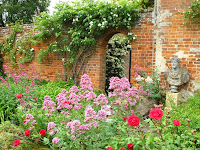
The church has a very elegant stone steeple and tucked away in a back corner is John Newton's pulpit. Newton was the Curate-in-charge at the Parish Church and it was here that he penned his most famous hymn, Amazing Grace.
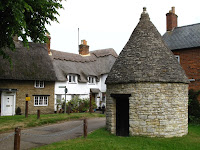 A short drive away is Turvey. This town is smaller, but equally lovely. The approach in is over a beautiful old stone bridge, and overlooking the bridge is Turvey House. This was open to the public, and we enjoyed their large colourful walled garden. The house tour was equally enjoyable, still lived in, it really appealed as a house to live in. Lots of interesting details were given, like one owner decided to make the back door into the front entrance.
A short drive away is Turvey. This town is smaller, but equally lovely. The approach in is over a beautiful old stone bridge, and overlooking the bridge is Turvey House. This was open to the public, and we enjoyed their large colourful walled garden. The house tour was equally enjoyable, still lived in, it really appealed as a house to live in. Lots of interesting details were given, like one owner decided to make the back door into the front entrance.  This left the kitchens and butler's pantry by the front carriageway, so needed to be hidden behind a wall. However that still left a problem with servants accessing tbe utility areas from across the drive so the owner built a tunnel from the outbuildings, under the new carriageway, for the servants to reach their part of the house without the guests observing them going back and forth.
This left the kitchens and butler's pantry by the front carriageway, so needed to be hidden behind a wall. However that still left a problem with servants accessing tbe utility areas from across the drive so the owner built a tunnel from the outbuildings, under the new carriageway, for the servants to reach their part of the house without the guests observing them going back and forth.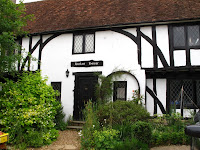 In the library we were able to examine an original Captain Cook tour globe, and find New Zealand looking pretty much as we know the geography today. The globe plotted his voyages of discovery around the world.
In the library we were able to examine an original Captain Cook tour globe, and find New Zealand looking pretty much as we know the geography today. The globe plotted his voyages of discovery around the world.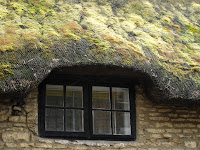 From Turvey we drove further north to Harrold, where we had a town trail to follow. At first glance, this town does not appear as picturesque as the other two, but on the walk we discovered many interesting features. In centuries past, this was the site of about five tanneries and leather works.
From Turvey we drove further north to Harrold, where we had a town trail to follow. At first glance, this town does not appear as picturesque as the other two, but on the walk we discovered many interesting features. In centuries past, this was the site of about five tanneries and leather works.

